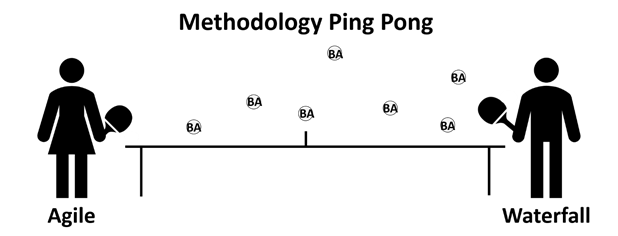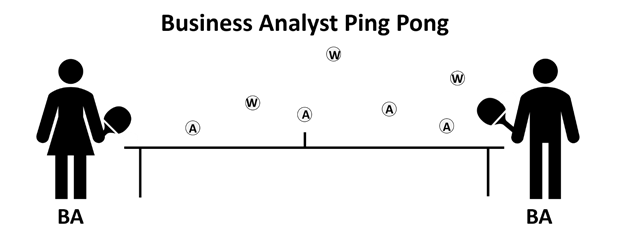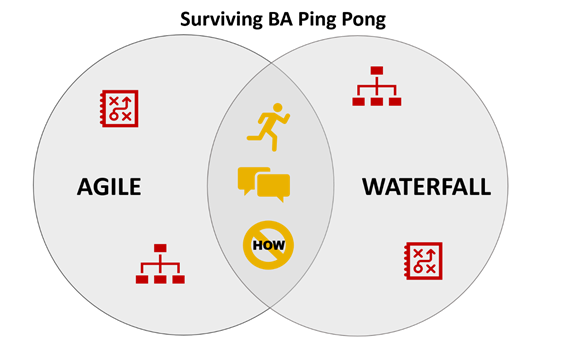Customer Obsession – You Better Have It!
Everything you do impacts the end customer. Yes! Even if your project doesn’t seem to touch the end customer, there’s always a connection.
Great BAs understand this and help their stakeholders discover the customer connections for every product, project, enhancement, feature and even for simple bug fixes—that’s customer obsession.
As I think about the early days of my BA career, we had this customer obsession! Unfortunately, it’s kind of a lost art these days. The customer seems to lag in the race to deliver “on time and on budget” or gets silenced as we debate methodology or best practices.
There is a technique that comes to mind (from these olden days of customer obsession) that I don’t hear about much anymore. I think it’s ready for a comeback.
Anyone remember using the TouchPoint Matrix?
Shout out to BobTheBA – Bob, I remember we talked about this years ago, so I’m bringing it back to the table for a broader dialog! With a few updates, this dusty old tool would be quite useful for a variety of projects including those tangled in agile and digital transformations.
So, let’s take an imaginary journey…what if…what if…you started your project with a Customer Touchpoint Analysis? You would gather your stakeholders together to explore the value streams and processes that your customers use when interacting with the product, service, application or process. How would that change course of the project? What if everything you did with requirements, user stories, and the like was anchored and centered in the end-customer point of view?
Our leaders are begging us to be more customer centric. Human-centered approaches like design thinking are finally getting traction and gaining popularity. How can BAs expand these approaches to make sure that we don’t lose the intent of a great customer experience in the detailed requirements and the build of the solution?
For example: If you are working on a billing system, the customer’s bill/invoice is an obvious touchpoint. But there are so many more! Your touchpoint analysis would dive into how the bill/invoice experience impacts the customer overall:
- • What actions did the customer take before or after getting that bill?
- • What interactions did the organization have with the customer before and after that bill?
- • What method/platform did the customer or the organization use to complete the interaction? Emails, text messages, phone conversations, web/online interactions, in person?
- • Do the interactions across platforms align?
The customer doesn’t see or care about the various technical platforms, they can are all the touchpoints that they have had with you as an organization. Do they make sense? I can say for sure that many encounters with organizations I have just aren’t making sense, no one seems to be looking at my experience holistically.
I recently interacted with a company that needed a dose of customer obsession and a touchpoint analysis. I contacted the company to cancel my service. So a few days later, I was very surprised when I received a phone call that someone was at my house to provide a fix for a reported problem . To top it off, I was billed for the service too, yes after I had cancelled. Touchpoint gone wrong! Hours of calls to fix the seemingly simple issue indicated many more touch points gone wrong. It’s possible this company built and enhanced its systems on schedule, within cost and within scope, but forgot about the customer. Did anyone look at the customer experience overall to see that none of the touchpoints made sense when all linked together from a customer point of view?
How are your touchpoints with customers aligning? If you work in only one area or with one system, chances are your touchpoints are not aligned and the customer is frustrated. We’ve all had a call center agent ask us for information we’ve already entered into the keypad. Frustrating!
My favorite touchpoint-gone-wrong experience this week was with an airline. They informed me, via a mobile app message, that I was eligible to upgrade to first class for an upcoming flight. I’m thinking, “Awesome—free food and more elbow room!” The app tells me to “tap to confirm” and then assigns me a seat in first class. Great, but—when asked to check in online for the flight, I am forced to pay for the upgrade, with no option to turn down the upgrade and take back my original coach seat!
I know we have all experienced this lack of alignment between systems and processes. Where is the BA role in this? Everywhere!
As customers, our expectations are increasingly becoming more refined and we no longer accept these frustrating and inappropriate experiences. We start to lose trust in the organization and look for other options—companies that deliver better experiences.
As BAs, we’re responsible for helping our stakeholders discover and explore customer touchpoints. It’s our job to be obsessed with our customers and make recommendations to improve the customer experience.
Are you ready to take back touchpoint analysis?







